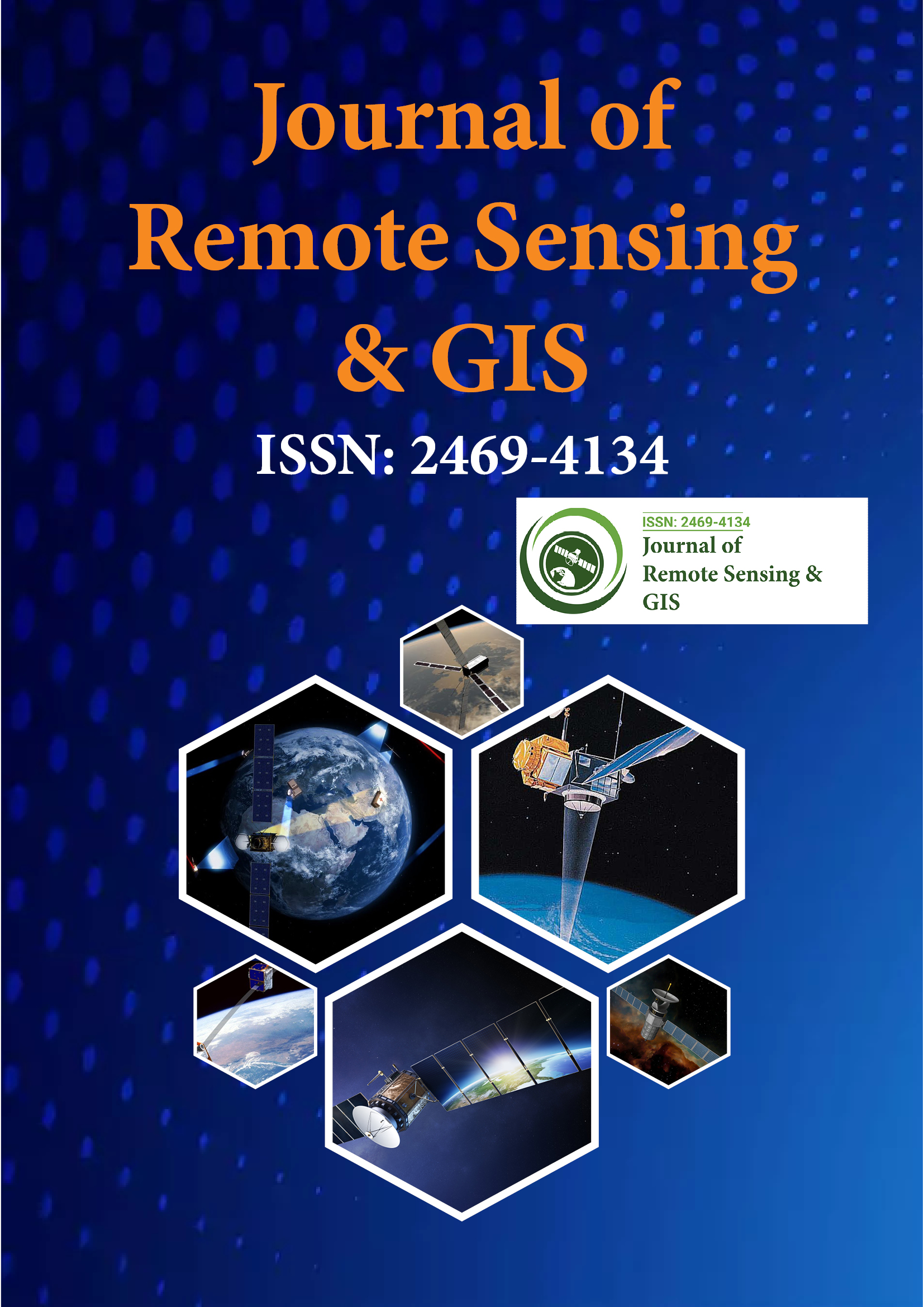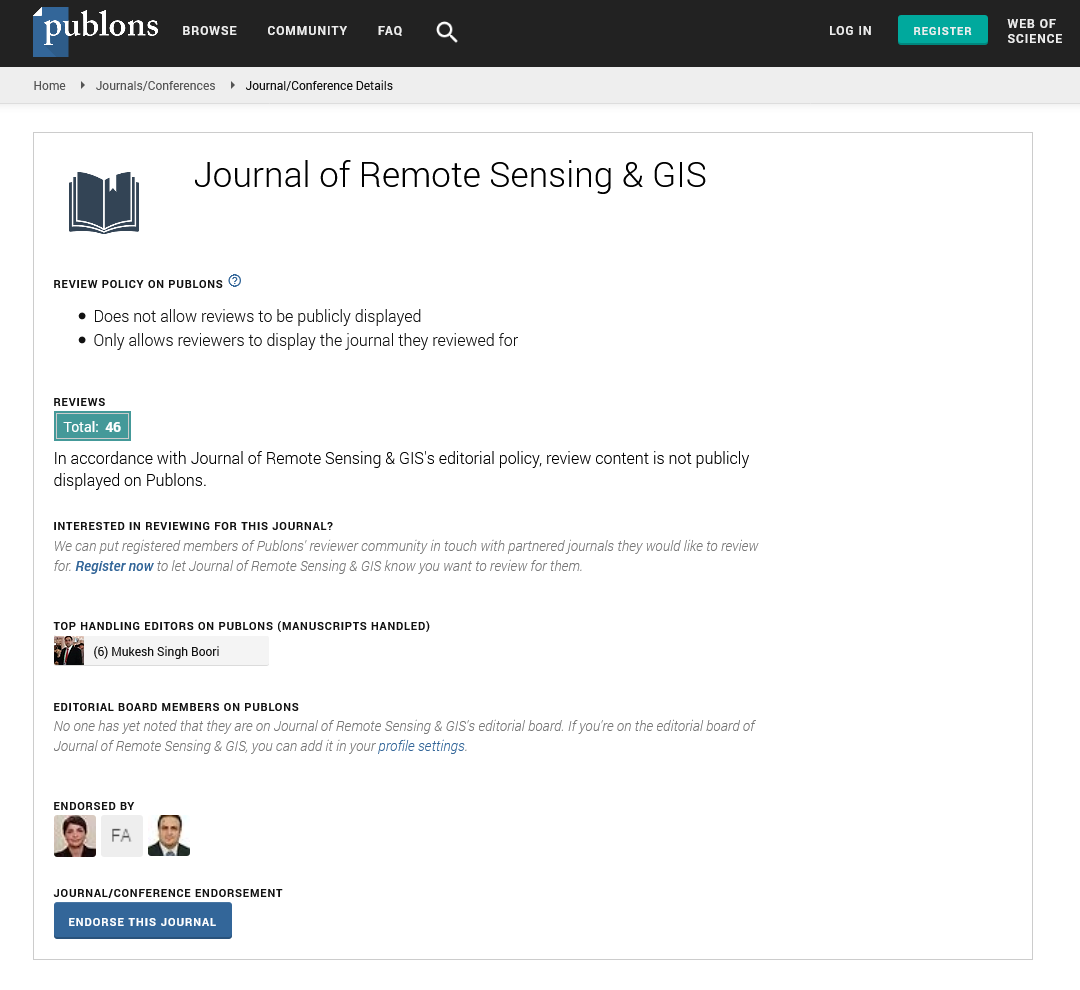Indexed In
- Open J Gate
- RefSeek
- Hamdard University
- EBSCO A-Z
- OCLC- WorldCat
- Publons
- International Scientific Indexing
- Euro Pub
- Google Scholar
Useful Links
Share This Page
Journal Flyer

Open Access Journals
- Agri and Aquaculture
- Biochemistry
- Bioinformatics & Systems Biology
- Business & Management
- Chemistry
- Clinical Sciences
- Engineering
- Food & Nutrition
- General Science
- Genetics & Molecular Biology
- Immunology & Microbiology
- Medical Sciences
- Neuroscience & Psychology
- Nursing & Health Care
- Pharmaceutical Sciences
Editorial - (2021) Volume 10, Issue 12
The Advances of Remote Sensing Satellites in Recent Time
AA Klyuchevskaya*Published: 07-Dec-2021
Remote sensor is a collection of information from a remote location. NASA surveys the Earth and other planets using sensors in space and satellites and planes that detect and record the energy shown or released. Remote sensors that provide global vision and data resources about the Earth system enable datadriven decision-making based on the current and future state of the Earth.
Other direct uses of distant landscapes include:
• Large forest fires can be drawn from the atmosphere, allowing observers to see a much larger area below.
• Tracking clouds to help predict the weather or view volcanic eruptions, and to help detect dust storms.
• Track urban growth and changes in farms or forests within a few years or decades.
• Discovering and mapping the rough terrain under the sea (e.g., large mountains, deep ravines, and “magnetic stripes” under the sea).
Remote sensor is the acquisition of information about an object or event without physical contact with the object, as opposed to local or local perception. This term is especially used to gather information about the Earth and other planets. Farsightedness is used in many fields, including geography, geography, and geography (hydrology, ecology, meteorology, oceanography, glaciology, geology, etc.). There is also the use of military, intelligence, trade, economics, planning and humanitarian assistance. In modern terms, the term "remote sensor" usually refers to the use of satellite or aerospace technology to detect and classify objects on earth. It covers the surface, the atmosphere, and the sea based on broadcast signals (such as radiation). This applies to "active" remote sensing (when a signal is sent from a satellite or a plane to an object and its appearance is detected by a sensor) and a "done" sensation (when sunlight is detected by a sensor).
The Indian Observation (EO) Indian suite capable of photographing the visible electromagnetic spectrum, infrared, thermal, and microwave, including hyperspectral sensors, has helped India to allow sensitive applications. Image sensors provide area adjustment from 1km to over 1m. Viewing (moment photography) is repeated every 15 to 22 minutes, and radiometry at a distance of 7 to 12 bits is performed. This has been very helpful in some national applications. Over the next few years, India's EO satellites will be continuously improved, taking into account the information / results made over the past few years, while addressing new monitoring needs and technological advances, including more advanced spacecraft. We are moving towards advanced technology. From the earliest use of aerial photography, remote sensors have been identified as an important tool for viewing, analyzing, classifying features, and making decisions about where we live. Over the past few decades, remote sensing technology has developed in three ways:
1) from the use of military in particular to the various uses of environmental analysis related to land, sea, and air issues;
2) from imaging systems to sensors that convert energy from multiple components of an electromagnetic spectrum to electrical signals; and
3) from aircraft to satellite platforms.
Today, we define a satellite remote as the use of satellite sensors to observe, measure, and record the electromagnetic radiation emitted by Earth and its environment in order to analyze and extract information.

